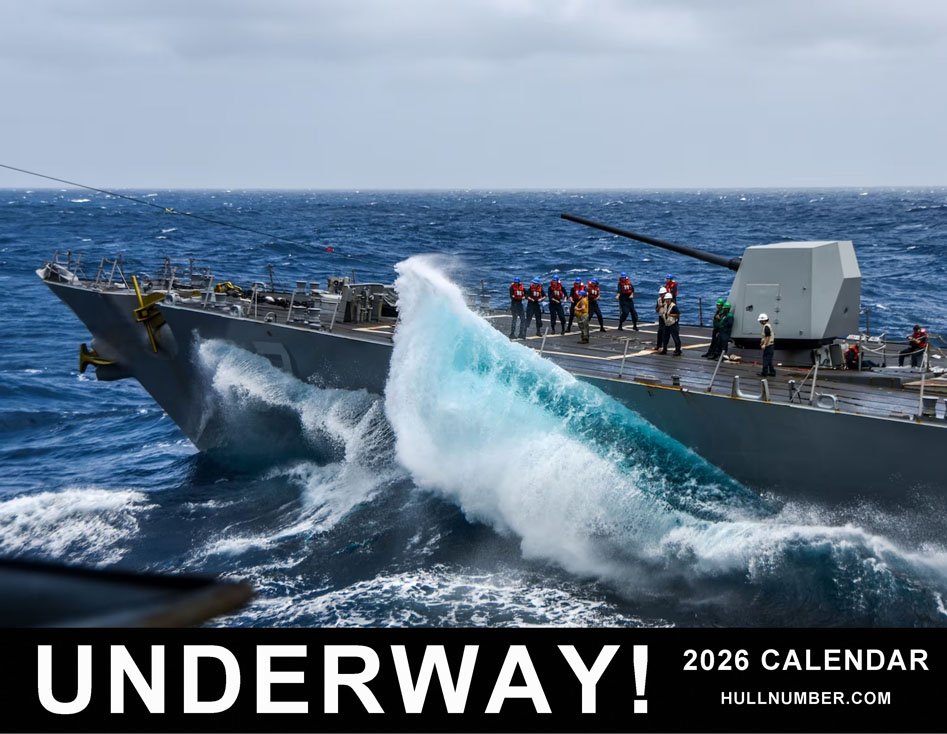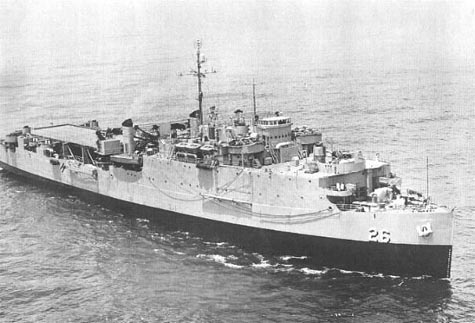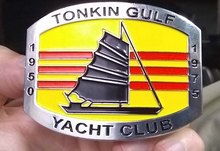 |
|||||||||||||||||||||||||||||||||||||||||||||||||||||||||||||||||||||||||||||||||||||||||||||||||||||||||||||
| TO RECEIVE A NOTIFICATION EMAIL AS SOON AS THE | |||||||||||||||||||||||||||||||||||||||||||||||||||||||||||||||||||||||||||||||||||||||||||||||||||||||||||||
| UNDERWAY! 2026 WALL CALENDAR IS SHIPPABLE - CLICK HERE |
|||||||||||||||||||||||||||||||||||||||||||||||||||||||||||||||||||||||||||||||||||||||||||||||||||||||||||||
 |
|||||||||||||||||||||||||||||||||||||||||||||||||||||||||||||||||||||||||||||||||||||||||||||||||||||||||||||
 |
|||||||||||||||||||||||||||||||||||||||||||||||||||||||||||||||||||||||||||||||||||||||||||||||||||||||||||||
| For RATING SHIRTS - Click on your Rating Abbreviation below: | |||||||||||||||||||||||||||||||||||||||||||||||||||||||||||||||||||||||||||||||||||||||||||||||||||||||||||||
|
|||||||||||||||||||||||||||||||||||||||||||||||||||||||||||||||||||||||||||||||||||||||||||||||||||||||||||||
| Click on your Rating abbreviation above: | |||||||||||||||||||||||||||||||||||||||||||||||||||||||||||||||||||||||||||||||||||||||||||||||||||||||||||||


U.S.S. TORTUGA
(LSD-26)YOU CALL WE HAUL
Click to view crew list
USS TORTUGA (LSD-26) - a Casa Grande-class dock landing ship
In Commission 1945 to 1970LSD-26 Deployments - Major Events
| Add a LSD-26 Shellback Initiation | Add a LSD-26 Deployment - Major Event | ||||
| Month | Year | to | Month | Year | Deployment / Event |
|---|---|---|---|---|---|
| OCT | 1944 | - | Keel Date: 16 OCT 1944 at Boston Navy Yard | ||
| JAN | 1945 | - | Launch Date: 21 JAN 1945 | ||
| JUN | 1945 | - | Commissioned: 8 JUN 1945 | ||
| DEC | 1950 | - | DEC | 1951 | Inchon Landing |
| FEB | 1958 | - | MAY | 1958 | Operation Hardtack - Eniwetok & Bikini Atolls, Marshall Islands |
| OCT | 1959 | - | MAY | 1960 | West Pac |
| AUG | 1964 | - | OCT | 1964 | West Pac-Viet Nam |
| MAR | 1966 | - | NOV | 1966 | West Pac-Viet Nam |
| MAR | 1966 | - | SEP | 1970 | West Pac-Viet Nam |
| NOV | 1966 | - | APR | 1968 | West Pac-Viet Nam |
| JUL | 1967 | - | MAR | 1968 | West Pac-Viet Nam |
| JAN | 1969 | - | SEP | 1969 | West Pac |
| JAN | 1970 | - | Decommissioned: 26 JAN 1970 | ||
LSD-26 General Specifications
Class: Casa Grande-class dock landing ship
Complement: 326 Officers and Enlisted
Displacement: 4490 tons
Length: 457 feet 9 inches
Beam: 72 feet 2 inches
Flank Speed: 15 knots
USS TORTUGA (LSD-26)
Tortuga (LSD-26) was laid down on 16 October 1944 by the Boston Navy
Yard
launched on 21 January 1945; sponsored by Mrs. George D. Payne
and
commissioned on 8 June 1945
Lt. Comdr. Raymond G. Brown
USNR
in command.
Commissioned during the final phase of World War II
Tortuga conducted
shakedown in the Virginia capes area and was at Colon
Canal Zone
en route
to the Pacific combat area on 15 August 1945 when she received news of Japan's
surrender. The dock landing ship soon proceeded to Buckner Bay
Okinawa
and subsequently operated in Korean and Chinese waters repairing small craft
and serving in the mobile support unit attached to Amphibious Forces
Pacific
Fleet. Operating initially out of Jinsen (now Inchon)
Korea Tortuga
subsequently conducted her support missions out of Tsingtao
Taku
and Shanghai
China
Hong Kong; and Yokosuka
Japan. In the spring of 1947
the ship returned
to the west coast of the United States via Guam and Pearl Harbor
and was
decommissioned and placed in reserve at San Diego on 18 August 1947.
Following the communist invasion of South Korea in the summer of 1950
Tortuga
was recommissioned on 15 September 1950
Comdr. Elof W. Hermanson in command.
Reactivated in response to the Navy's need for amphibious ships created
by the war in Korea
the landing ship dock underwent an abbreviated refitting
and shakedown before she sailed for Japan on 29 December. Proceeding via
Pearl Harbor and Eniwetok she arrived at Sasebo on 3 February 1951. Tortuga
participated in a feint landing which preceded the operation mounted to
recapture the strategic port of Inchon.
About this time
intelligence reports indicated that the Chinese communists
might take advantage of American preoccupation with the war in Korea by
mounting an invasion
across the Taiwan Strait
of Nationalist-held Formosa.
American strategists felt that
in such an endeavor
the Chinese would utilize
many seagoing junks since
in operations off Korea
vessels of this type
had proven to be almost unsinkable. Accordingly
Tortuga raised eight
60-foot junks from the depths of Inchon harbor and transported them to Yokosuka
to be studied to determine what ordnance would be most effective against
them.
Tortuga remained in the Far East through 1952 for two more Korean
deployments. During the first
the landing ship provided support services
at Inchon; and
in the second
she took part in the massive amphibious feint
at Kojo
North Korea
from 13 to 16 October 1952
and in operations off
Wonsan
supporting minecraft in November and December. During 1953
Tortuga
participated in the Korean prisoner-of-war exchange after the Panmunjom
Armistice and also conducted landing exercises and maneuvers in the Far
East and off the west coast of the United States.
Tortuga was deployed to the Western Pacific (WestPac) again in 1954.
The signing of the Geneva accords which ended the flghting between the French
and Viet Minh resulted in the creation of two Vietnams -- north and south.
The former was to be in communist hands; the latter was to be governed by
non-communist leaders. Diverted to Haiphong from Yokosuka
Tortuga
arrived at her destination on 21 August 1954 to take part in the massive
evacuation of French nationals
in Operation "Passage to Freedom
"
as well as the moving of Vietnamese refugees who chose not to live in the
north under communist domination. The landing ship conducted four round
trips from Haiphong in the north to Tourane (now Danang)
Saigon
and Nha
Trang in the south
before she returned to Yokosuka on 4 October. For the
remainder of the year
she conducted minesweeper support operations in Korean
waters.
During the 14 years from 1955 to 1969
Tortuga would remain employed
in a regular schedule of deployments to WestPac. She was based at San Diego
until 30 June 1966
when her home port was changed to Long Beach. In between
deployments -- which included exercises and equipment lifts and labors to
help maintain the 7th Fleet's readiness -- Tortuga conducted local
operations out of west coast ports and underwent progressive modifications
during regular availabilities.
As American involvement in Southeast Asia deepened during the latter half
of the 1960's
Tortuga's deployment schedule accordingly reflected
her role in the buildup of Allied strength to attempt to check communist
domination of Southeast Asia. On 4 August 1964
North Vietnamese torpedo
boats attacked Maddox (DD-7311 and Turner Joy (DD-951) in
the Gulf of Tonkin. As a direct result
the United States took ever-increasing
steps to aid the South Vietnamese government in its attempt to combat Viet
Cong insurgent activity within its borders. Within a few years
American
involvement had been broadened from one of advising Vietnamese troops to
the actual commitment of massive land
sea
and air forces. Soon after receiving
word of the Tonkin Gulf incident
Tortuga -- combat-loaded -- got
underway from Buckner Bay. She remained underway in the South China Sea
from 6 August to 19 September before returning to Subic Bay.
For the remainder of the year 1964
Tortuga operated out of Yokosuka
and conducted troop and eauipment lifts between Japan and Okinawa until
she headed home and arrived back at San Diego on 18 December. In February
1965
the landing ship proceeded to Camp Pendleton
Calif.
to participate
in Exercise "Silver Lance
" the largest peacetime landing exercise
ever held. In June
she commenced a WestPac deployment. She proceeded to
Buckner Bay and Danang and
after operating in the Orient through the early
summer
returned to Long Beach in late August 1965. She subsequently conducted
a lift to Okinawa before she returned to San Diego for refresher training.
Tortuga sailed for Vietnamese waters on 1 March 1966
arrived at
Vung Tau on 18 April
and relieved Belle Grove (LSD-2) as support
ship for "Game Warden" -- the Navy's operation designed to interdict
the flow of communist supplies along the coastlines of South Vietnam. Initially
Tortuga operated in the Rung Sat special zone between Saigon and
Vung Tau helping to guard the entrance to the shipping channels snaking
through Viet Cong territory to the capital city.
Tortuga shifted to the Mekong Delta region on 12 June to serve as
a floating base for the Navy's fast PBR's of TF 116 and for a detachment
of Army Bell UH-1B Huey helicopter gunships. The PBR's attached to River
Patrol Squadron 512
were small yet relatively heavily armed craft. Each
mounted a .60-caliber machine gun forward and an "over-and-under"
combination mount of one .50-caliber machine gun mounted over an 81-millimeter
mortar aft. The helicopters
too
were relatively heavily armed
packing
a "punch" of rockets of varying sizes and up to six machine guns.
Initially
the helicopters were Army "choppers" from the 145th
Aviation Detachment. However
by the end of Tortuga's tour
they
were Navy aircraft from Task Force "Sea Wolf." Together
the PBR's
and Hueys conducted their patrols and forays into the verdant jungle waterways
the PBR's knifing through the muddy sandy-colored waterways while the helicopters
flew close cover above.
Occasionally
the hard-hitting teams would strike "pay-dirt
"
by capturing enemy munitions. On one occassion
on 12 June at the mouth
of the Co Chien River
Tortuga's PBR's participated in the capture
of a large stock of guns and munitions captured from a damaged communist
trawler which had been forced aground and set afire.
During her support operations with the riverine assault groups
Tortuga
received a number of distinguished visitors ranging from General William
C. Westmoreland
Commander
Military Assistance Group
Rear Admiral N. G.
Ward
Commanding Naval Forces Vietnam; as well as United States Ambassador
to South Vietnam Henry Cabot Lodge; and news commentator Chet Huntley
who
brought with him an NBC camera team to record a news story on Tortuga's
river patrol base activities.
Her deployment completed in the summer of 1966 Tortuga got underway
on 30 August and steamed via Japan to the west coast. She arrived at San
Diego on 7 November for leave
upkeep
and overhaul. The refit lasted through
April of 1967
modernizing the ship and preparing her for another WestPac
deployment. Following a period of refresher training and amphibious exercises
Tortuga sailed on 21 July 1967 from San Diego and arrived
via Hawaii
Guam
and the Philippines
at Danang on 5 September.
Upon arrival
Tortuga relieved Monticello (LSD-34) with Amphibious
Ready Group (ARG) "Bravo" and operated with that unit into the
fall of 1967. She took part in Operations "Fortress Sentry" and
"Formation Leader
" before her detachment from ARG "B"
on 9 November. Subsequently
Tortuga loaded a cargo of disabled or
damaged CH-46 helicopters for transport from Danang to Okinawa
where the
"choppers" were repaired for further service. For the remainder
of the year
from 3 to 31 December
Tortuga conducted cargo lifts
from Japanese ports to Vietnam and vice-versa.
Tortuga then returned to the west coast -- via Yokosuka
Buckner
Bay
Subic Bay
Hong Kong
and Pearl Harbor -- and arrived at Long Beach
on 9 March 1968. For the remainder of the year
the landing ship conducted
exercises and local operations out of Long Beach until again deploying to
WestPac in February 1969. On 17 February
while en route to Yokosuka
Tortuga
conducted her first underway refuelingwith Cook (LPR-130) -- receiving
31
000 gallons of Navy Special Fuel Oil (NSFO). Upon arrival at Yokosuka
Tortuga's in-port time was extended to allow the on-loading of a complete
destroyer radar system for transport to Subic Bay. Underway on 11 March
with her special cargo
the landing ship soon reached Subic Bay
unloaded
and proceeded for Kaohsiung
Taiwan
en route to South Vietnam.
On the last leg of her Vietnam-bound voyage
Tortuga instituted a
stepped-up shipboard defense program consisting of daily general quarters
drills
exercising especially with the ship's guns and in damage control
problems -- for the ship had received intelligence reports that a Viet Cong
rocket attack was expected to coincide with her arrival at Danang. When
paraflares were sighted on the horizon at 0200 on 14 March
Tortuga
knew that she had arrived at her destination and went to general quarters.
The expected attack failed to materialize
though
and Tortuga unloaded
her cargo unmolested but at piers which
only the day before
had been rocketed
by the Viet Cong. When the offloading was completed
Tortuga shifted
her berth far away from most of the shipping in the harbor. There boat crews
bent to the task of loading old ammunition on the ship. Meanwhile
one boat
crew
composed of one officer and five enlisted men
armed with rifles and
Thompson submachine guns
kept a constant vigil in an LCVP which circled
the ship at a distance of 60-70 yards. Periodically
at odd intervals
the
boat's crew would drop percussion grenades in the water in an effort calculated
to discourage enemy frogmen. When the task was completed
the ship got underway
for the Philippines.
Reaching Subic Bay after an uneventful passage
the ship unloaded the explosives
and soon received orders to transport a much-needed suction dredge up the
Saigon River to Nha Be
through territory largely controlled by the Viet
Cong. At Tan My
Tortuga embarked the dredge and a warping tug and
got underway. During the transit of the Saigon River
the landing ship stood
to general quarters
keeping a sharp eye for enemy attempts to impede the
progress of the ship. The enemy failed to appear
however
and Tortuga
her dredge
and her tug arrived at Nha Be soon thereafter.
From 5 to 20 May
Tortuga participated in "Daring Rebel
"
an operation mounted to seek out and destroy Viet Cong rest camps on Barrier
Island
15 miles south of Danang. Joining Duluth (LSD-6)
Winston
(LKA-97)
and Okinawa (LPH-3)
Tortuga closed the beachhead
while
White River (LSMR-536) stood offshore to provide initial bombardment.
When White River launched a heavy rocket barrage shoreward
"Daring
Rebel" got underway. Landing craft splashed ashore while troop-carrying
helicopters quickly airlifted troops ashore in the vertical envelopment
phase of the operation. For the next two weeks
Tortuga served as
primary control ship for the operation which located and destroyed caches
of food and ammunition and Viet Cong rest camps.
The landing ship again served as primary control ship (PCS) in Danang harbor
during "Gallant Leader
" a follow-up to "Daring Rebel."
Relieved by Duluth on 23 May
Tortuga set sail soon thereafter
for Buckner Bay and simulated combat landings during exercises with Assault
Craft Unit 1 in late June. In July
Tortuga transported the first
increment of marines and their equipment for "Keystone Eagle
"
from Cua Vet
South Vietnam
to White Beach
Okinawa
before returning up
the Saigon River to Nha Be with a load of palletized cargo.
Subsequently supporting Operation "Sea Float
" delivering two
pontoons and 32 pallets of ammunition from Nah Be to Tan My
Tortuga
onloaded men and equipment from "Charlie" Battery
1st Light Antiaircraft
Missile Battalion (LAAM)
First Marine Air Wing
at Danang harbor for transport
to the west coast of the United States. In this last operation
the second
increment of "Keystone Eagle
" Tortuga headed "stateside"
for the last time
and arrived at Seal Beach
Calif. on 12 September 1969
unloading the 58 Hawk missiles of the 1st LAAM Battalion
USMC
and then
proceeding to the Long Beach Naval Shipyard.
Tortuga disembarked her marines and proceeded to pier 7 where she
was moored outboard of Carter Hall (LSD-3). On 3 January 1970
Tortuga
got underway for the Inactivation Facility at Mare Island
where she was
decommissioned on 26 January 1970. Transferred to the temporary custody
of the Maritime Administration (MARAD) on 6 October 1970
the ship was berthed
at Suisun Bay
Calif.
where she was later placed in permanent custody of
MARAD on 1 September 1971. She was carried on the Navy list into 1977. Her
name then disappeared from the list.
Tortuga was awarded five engagement stars for her Korean War service
and eight for service off Vietnam
[Note: The above USS TORTUGA (LSD-26) history may or may not contain text provided by crew members of the USS TORTUGA (LSD-26) or by other non-crew members and text from the Dictionary of American Naval Fighting Ships]
